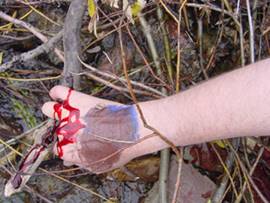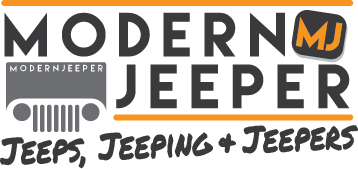

It’s Never A Good Idea To Split The Group
Lifestyle November 16, 2023 Tom Severin

One of the fundamental tenants of four-wheeling is to always travel with at least one other vehicle. Meaning, of course, never go four-wheeling alone. Bad things can happen, even during nice weather in a seemingly benign area.
But sometimes it’s necessary for a vehicle to leave the group. Implementing the proper steps will help those four-wheelers return safely.
Why drivers leave a four-wheeling excursion

There are several reasons why a driver would leave.
- Need part(s) for a vehicle. Four-wheeling is tough on a vehicle, resulting in unexpected failure. If replacement parts aren’t on hand, someone needs to drive into town. Ditto for getting more gas. see Don’t Be A Fool, Stop For Fuel!
- Somebody needs medicine or suffers an illness or injury. If it’s not a life-threatening situation, a trip to town should resolve the situation. A small cut on the forehead bleeds profusely but is not life-threating. However, I recommend a trip to town for stiches so it heals up without a scare – unless it is a guy.
- A participant simply wants to leave; quits the trip. For example, wasn’t prepared for a cold night. Another possibility is that a someone received a call and has to tend to a situation at home.

What to do if you need to split the group
If a group has to split up, make careful arrangements to ensure the safe departure or return of those who are expected back. Some suggestions for making those arrangements.
- As noted above, always send at least one additional vehicle if they arereturning. Don’t send the person off on their own. If they get stuck, break down along the way, or get lost, that person could be in real trouble. Have two vehicles escort a departing vehicle. The four-wheeling spirit is high and most other drivers view it as an adventure to accompany a departing or returning vehicle.
- A better solution not involving a second vehicle is to depart near a well-known road. Don’t send them on their way in the middle of nowhere. Find a paved, marked road to split up – even if it means backtracking on the route.
During one excursion a driver stated he wanted to head home early. I told him that is possible during the first two days but not afterward. Early on we were near a paved road. After that, we would be traveling on rough, rocky, dirt trails. It would be too difficult to find his way out. The driver chose to leave early.
- Drive until you’ve reached that day’s campsite. Those leaving (including a second vehicle) are then familiar with the location of camp and should be able to find it upon their return.
Trying to find a campsite in the middle of the night, even with way points, can be difficult. Night changes all your reference points and sense of distance. Have the drivers proceed to that location first, then depart for town.
- If, after providing first aid, someone needs medical attention, determine the level of seriousness. If really serious, you may need to end the trip and have everyone escort the person to definitive medical treatment.
Otherwise, make sure the departing group has instructions to the nearest clinic or hospital. I carry an emergency packet for all my excursions. That includes a map and directions to the clinic or hospital (along with phone numbers). Make sure your directions take the person directly to the medical facility, not just to the edge of town.
- Devise contingency plans for all vehicles whether leaving or returning. Provide instructions on where the departing parties will link up with the main group later.
For example, you could tell them to meet at campsite X on the expected day and time. In the event they’re delayed, the instructions will state where to link up later. Remember that you might be in an area with no cell service. It could be very difficult to communicate after everyone leaves. Have at least two days’ worth of contingency plans in place.
Finally, gather the group together and let them know what’s going on. People become worried when they see vehicles leaving. Assure them that the trip is still on, and provide all details of the circumstances.
Oh – one last thought – make sure they are not leaving with the only can opener.
Alternative communication options important for four-wheeling
This is a good time to discuss communications devices and navigation aids. With cell service spotty to nonexistent in many areas, it’s important to have alternative resources in all vehicles.
Without communication concerning safe arrival or return ETA, the group will worry about the vehicles that left.
Ham radio: The mountains out west are dotted with VHF and UHF repeaters. Ham radio operators generally can hit a repeater that can be accessed by both groups. Ham radio requires a license, so it is not as widely employed by all travelers. see When Disaster Calls, Amateur Radio Answers
SPOT and inReach® communication devices: Each offers a unique way to send a message. Both connect with satellites, so they should operate nearly anywhere. With the service plan you can interface either SPOT or inReach® with a smartphone. Text messages can be sent to another smartphone, even those without SPOT or inReach®. Once a text is received, text messages can be sent back as long as they have cell service even if the person receiving the text does not have SPOT or inReach®. SPOT and inReach® do not support transmitting pictures.
If only one person has SPOT/ inReach®, leave it in camp (or the group that does not have cell service) to give the best chance of communication.

Satellite phone: Allows the user to call from anywhere. Phone entails initial cost plus a rate plan.
GPS receiver: As a receiver, it can only provide information. But its information is invaluable. A GPS receiver provides very precise data, allowing the user to track and locate. If needed, become familiar with all the unit’s functions.
Navigation aids: These include maps (street and topographical) and a compass. Every off-road vehicle should have these.
Ideally, a group would not split up during a trip. But if anyone has to depart, the steps above will help ensure a smooth return.
####





![MJ Destinations: 3 Days in The Mojave National Preserve – Day Three [BONUS MAPS]](https://i0.wp.com/modernjeeper.com/wp-content/uploads/2024/02/Mojave-Day3-48-scaled.jpg?resize=70%2C70&ssl=1)






